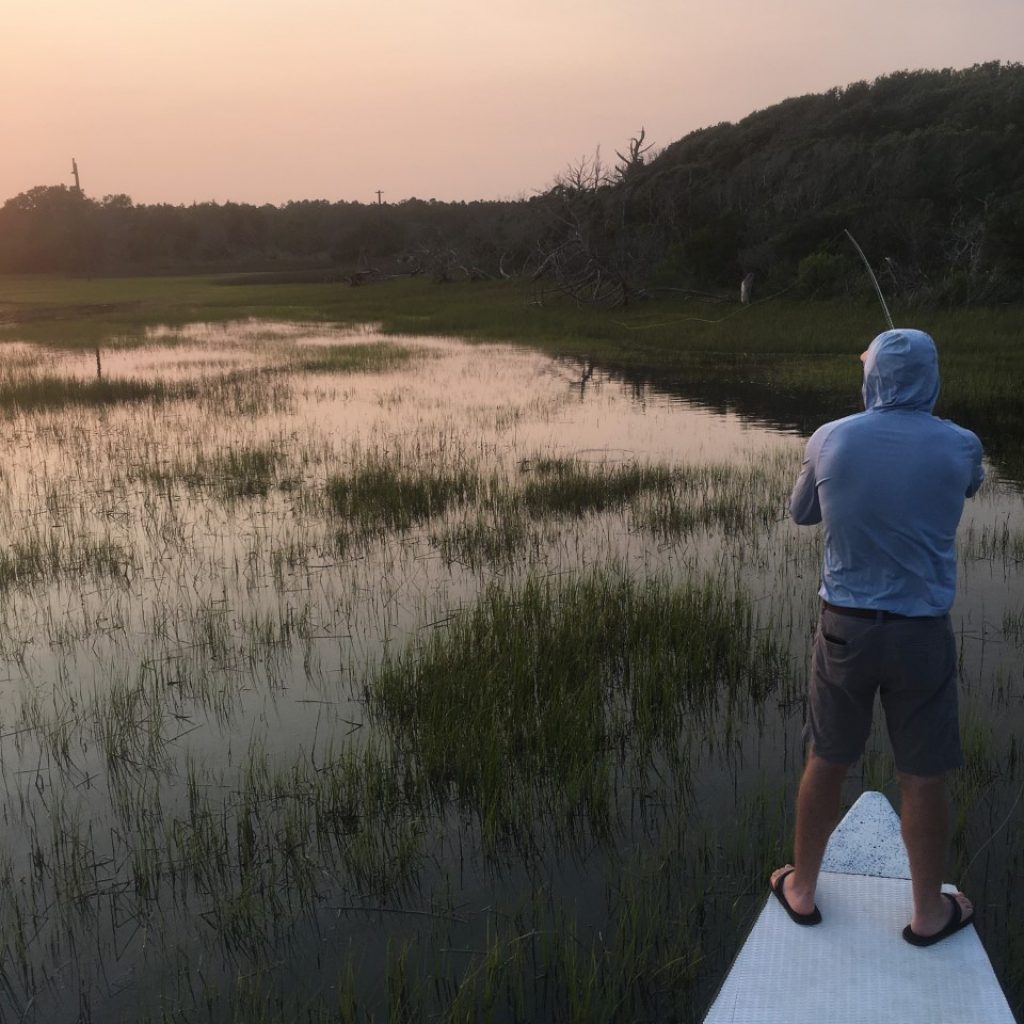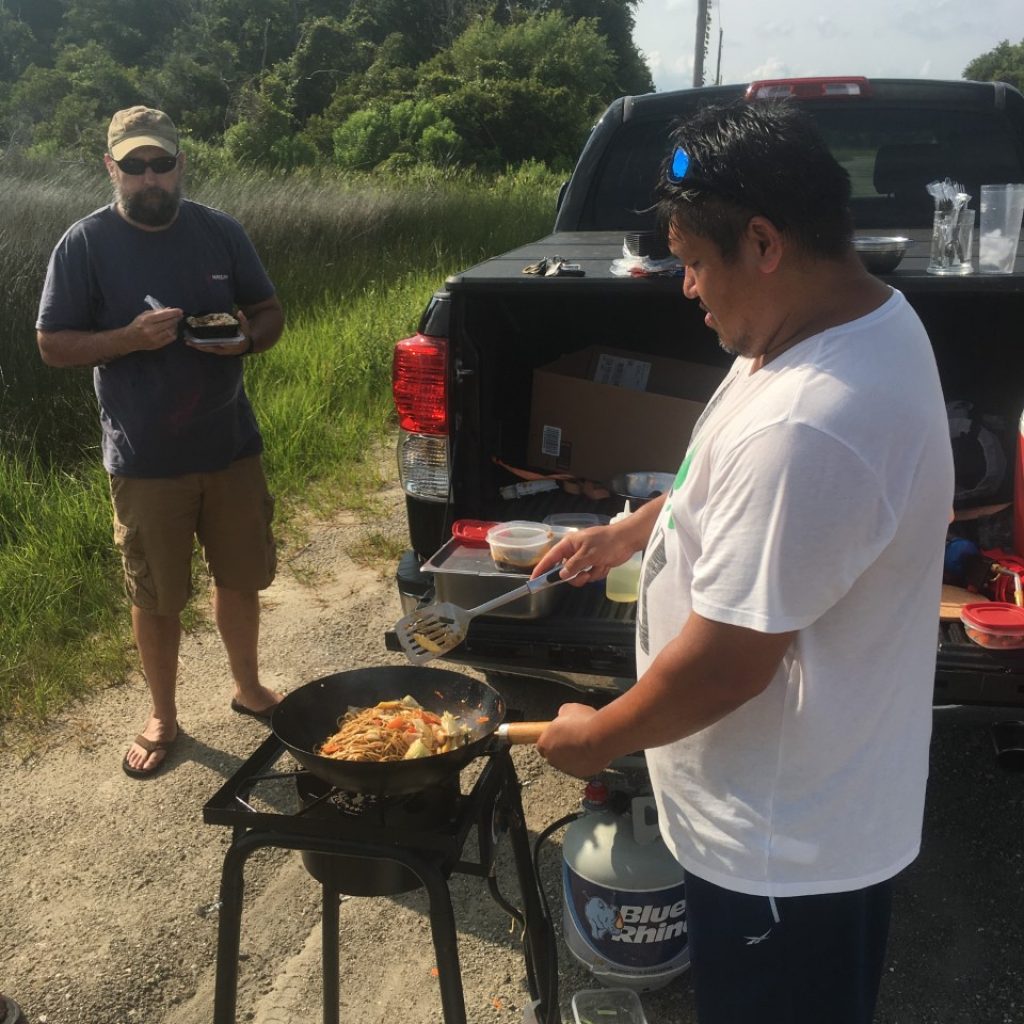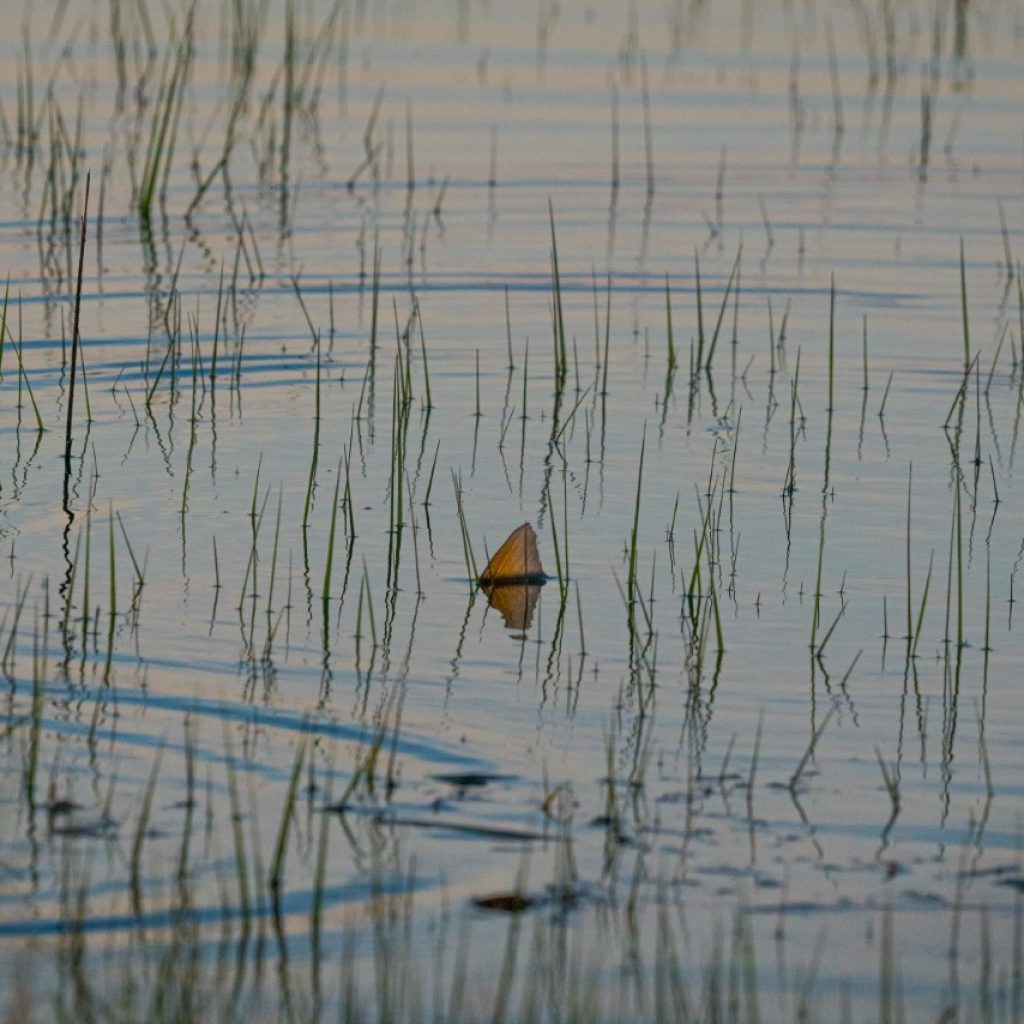NEWS & STORIES
Camp Lejuene is Back Together and Chasing Redfish
Story by Chris Thompson
The soft crunching sound of tires turning over gravel stopped with the truck in front of the small wooden dock. A seafoam green East Cape Fury technical poling skiff was already moored, waiting to be boarded. Three men laughed at the tailgate of another truck with several small coolers in the bed, one of the men cooking on a portable stove. We unhooked the strap securing an aquamarine Gheenoe to the trailer behind our truck, eased it into the water, and secured it alongside the other boat. Both vessels bobbed lazily on their lines, ready to surge towards the saltwater marsh and our quarry for the evening, redfish. After parking the truck, we walked over to the men by the stove, the salt air on the breeze adding to our already childlike excitement. The evening’s gathering of the Camp Lejeune Program of Project Healing Waters Fly Fishing, Inc. was now in order.
This was only our second in-person outing since long standing COVID restrictions were lifted. Everyone was giddy at the prospect of finding fish, and just enjoying one another’s company. Lake Subsavad, a former Marine and Participant in the Program, was so excited he insisted on preparing a dockside dinner. Originally from Thailand, he had a wok going making spicy noodles and fried rice with chicken and vegetables. Delicious smells filled the air, and our salivating mouths told our brains food was temporarily more important than fishing. We huddled around the tailgate ravenously consuming the superb fare while we joked, laughed, and discussed the strategy for the evening’s fishing. Only a few of us had ever fished flood tides for tailing redfish.
This local outing was a bit different than those we were traditionally accustomed to. First, the outing was planned to take advantage of flood tides for tailing redfish. Flood tides are a saltwater phenomenon where the high tide rises enough to flood grass flats that are normally dry ground. They may only happen a few days a month when there is enough light to see, and then one has to pray the weather doesn’t conspire to keep you couch ridden. When the flood tides rise the grass flats flood, and redfish move onto the flats in order to forage for food. As the fish feed, they use their tails to push their heads to the bottom searching for resident crustaceans. Their tails are often visible above the waterline, hence the term tailing redfish. Anglers are then able to sight cast to actively feeding fish in shallow water (8-24 inches depending on the tide)…if they can reach the flats.
In our home waters, nearly all the flats require a watercraft of some sort. This week we were lucky enough to have the flood tides and two boats, which meant we couldn’t all be together on the same evening. Two members of the Camp Lejeune Program have shallow water poling skiffs (Former Marine and Participant, Nathan Rhea owns the East Cape, and our Program Lead owns the Gheenoe) and they were willing to take Participants fishing. Although there weren’t enough boats to take everyone at once, there were five sequential evenings of flood tides, and we had the boats and their operators for them all. After polling the Participants for availability, we were able to distribute people among the boats over the five nights. Between three to five Participants were able to attend each evening, most of whom had never experienced this type of fishery before.
Lake doesn’t know how to cook small amounts of food. Even after the five of us descended like a hoard of locusts, there were still leftovers. Bellies full, and coolers packed, we boarded the boats. The motors fired up, and we raced to positions on the flats. As the boats reached their final locations they edged into the tall grass lining the saltwater creeks, the engines were shut down and raised, and the operators climbed onto poling platforms on the stern of the boats with long, 20 foot or longer, graphite poles. Their anglers went to the bow and stripped out fly lines at their feet, and grasped size 2 shrimp patterns in their hands. No one spoke, the only sounds the soft splashing of water as the poles were planted and retrieved, and the distant sound of surf crashing behind a wall of live oaks opposite the marsh.
Each member of the angling teams intensely scanned the surface for movement, and the tell-tale triangle of a redfish tail. The pushermen propelled their crafts through the shallow water, gliding over grass, as the harmonious dialogue of flats hunters ensued. Vigilantly searching for any sign of potential fish, the angler on the bow might say, “Look at 2 o’clock. I just saw movement near that large clump of grass.” To which a likely response from atop the poling platform might be, “That’s just bait, but keep looking.” We would continue to slowly stalk the flat, pointing out anything that might be a red, until finally, “11 o’clock, 50 feet. There’s a tail!” Upon observing the actively feeding fish, the boat would be moved into position with the bow placed at an optimal casting angle. With constant communication between the non-professional guide and their angler, a cast would be made to present the fly, followed by instructions to strip and pause the fly, hoping the fish would eat. A successful eat would be quickly followed by hearing, “Strip Set!”, watching the fly line rip through the water, and then a tug of war would ensue. (Note: A non-professional guide would be those of us poling the skiffs around on this trip. Those professional guides are good at what they do and earn a living doing this. We have some of them that support us, and it’s important to distinguish we’re amateurs!)
This pattern of poling the flats, on the hunt for tailing reds would continue with Participants taking turns as the angler. Each night the Participants rotated, a wonderful repetition of the evening before. It was like being stuck in a wonderful dream. Get on the skiffs and head into the marsh full of enthusiasm and hopefulness. A gentle breeze would provide some comfort from the oppressively humid weather, and the blood thirsty no-see-ums. Gulls would swoop down to chase shrimp and baitfish hiding in the marsh grass. Guys with long poles on platforms would talk to other guys holding long sticks on the bow, as the skiffs moved over the flat. Some fish would be seen. Some casts would be made. There were even some fish hooked…and then broken off (but that’s another story and a great laugh for those of us that were there). Each evening ended the same way, the sun would begin to set and brilliant colors from the sky would be reflected on the water, with everyone hoping for one last fish to magically appear from the darkening water ready to pounce on a fly.
Story by Chris Thompson


